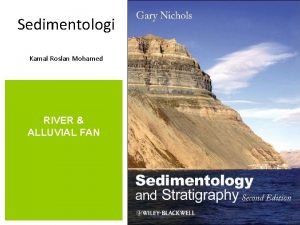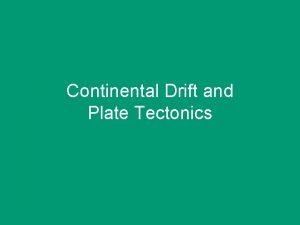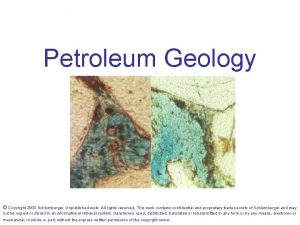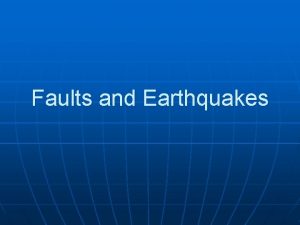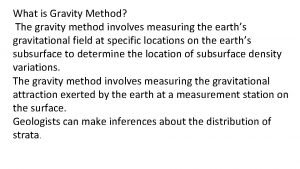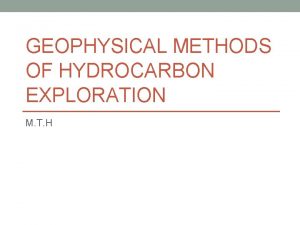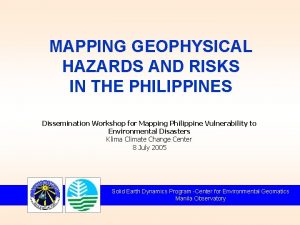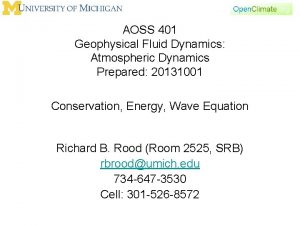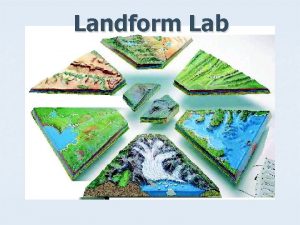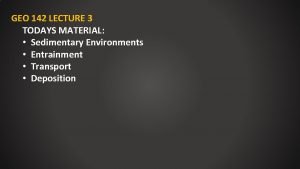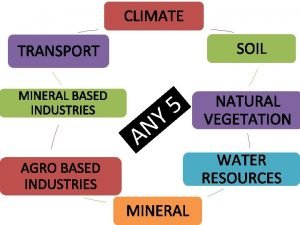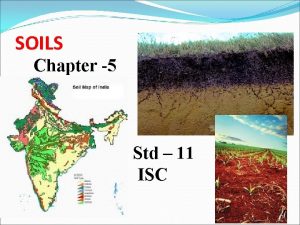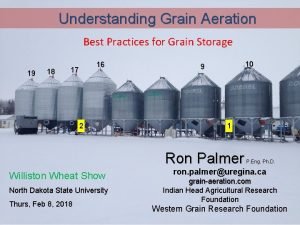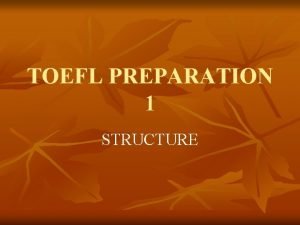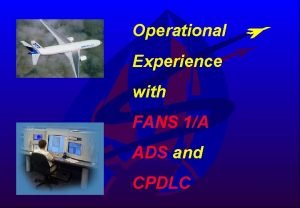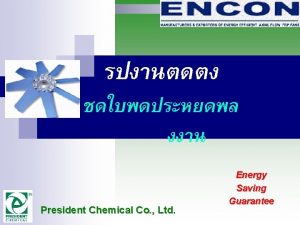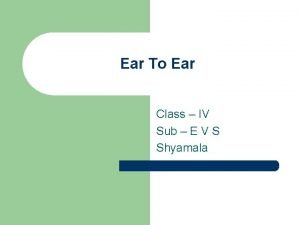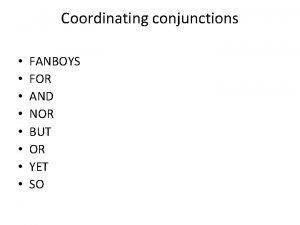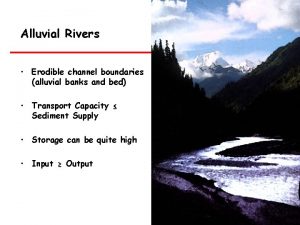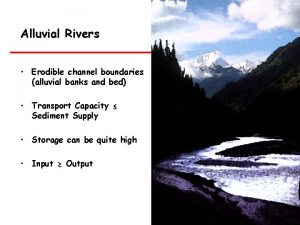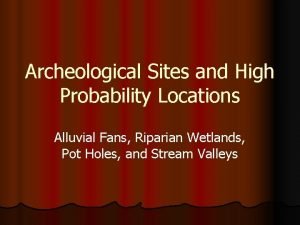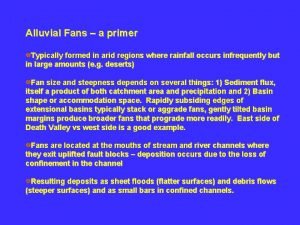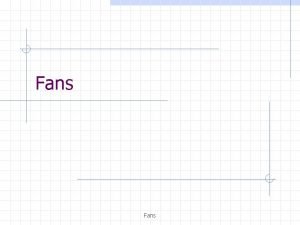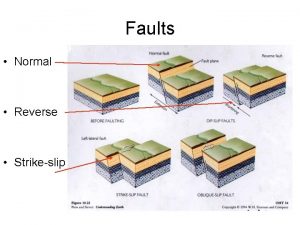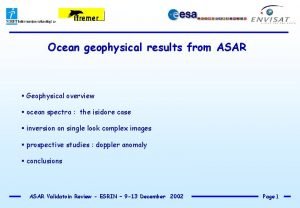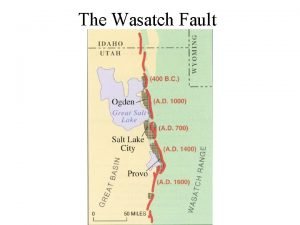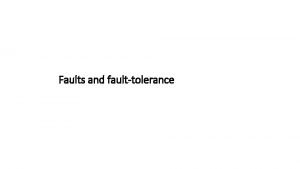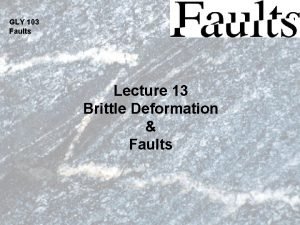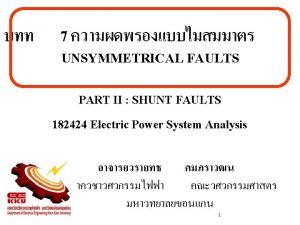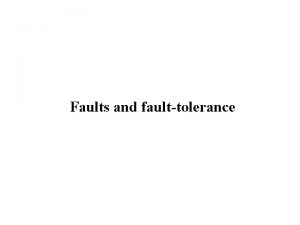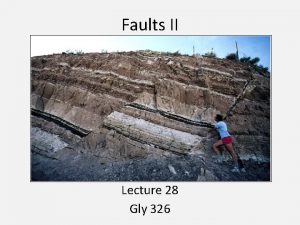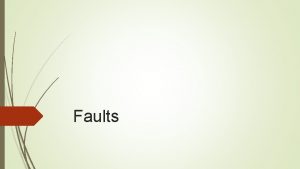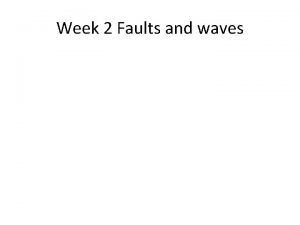Imaging Normal Faults in Alluvial fans using Geophysical
























- Slides: 24

Imaging Normal Faults in Alluvial fans using Geophysical Techniques: Field Example from the Coast of Aqaba, Saudi Arabia Sherif M. Hanafy 28 October 2014

Outline • • Motivation: Faults in alluvial sediments Study Area: Gulf of Aqaba Data Acquisition: Seismic and resistivity Seismic Result: Traveltime tomography Resistivity Result: 2 D imaging Conclusions Future Work

Outline • • Motivation: Faults in alluvial sediments Study Area: Gulf of Aqaba Data Acquisition: Seismic and resistivity Seismic Result: Traveltime tomography Resistivity Result: 2 D imaging Conclusions Future Work

Motivation Can we locate and characterize faults in alluvial sediments? We used seismic traveltime tomography and 2 D resistivity imaging to locate the fault

Outline • • Motivation: Faults in alluvial sediments Study Area: Gulf of Aqaba Data Acquisition: Seismic and resistivity Seismic Result: Traveltime tomography Resistivity Result: 2 D imaging Conclusions Future Work

Gulf of A qaba Study Area Red Sea

Study Area Fault raptured at the 1995 earthquake Seismic/resistivity profile

Outline • • Motivation: Faults in alluvial sediments Study Area: Gulf of Aqaba Data Acquisition: Seismic and resistivity Seismic Result: Traveltime tomography Resistivity Result: 2 D imaging Conclusions Future Work

Data Acquisition • Seismic Data – – – One profile 120 shot gather, 120 receiver/shot gather 2. 5 m shot/receiver interval 297. 5 m profile length 15 -20 stacks/shot location Source is a 200 lb weight drop • Resistivity – – 64 Nodes 5 m node interval 315 m profile length Wenner-Schlumberger configuration

Data Acquisition Fault rupture due to 1995 earthquake. Photo taken on Nov. 2013 Another location of the fault rapture due to 1995 earthquake. Photo taken on Nov. 2013

Data Acquisition Source: 200 lb weight drop Resistivity profile Seismic profile A photo shows the seismic and resistivity acquisition

Outline • • Motivation: Faults in alluvial sediments Study Area: Gulf of Aqaba Data Acquisition: Seismic and resistivity Seismic Result: Traveltime tomography Resistivity Result: 2 D imaging Conclusions Future Work

Seismic Data Common Shot Gather # 1 0. 0 Time (s) First arrival traveltimes 0. 3 0. 0 297 Offset (m)

Traveltime Picks Raw Picking After Reciprocity 1 Source No. 1 120 1 Receiver No. Time (ms) 0 210 120

RMS Error RMS error (ms) 0. 04 0. 0 Itr. No. 40

Seismic Tomogram First arrival traveltime picks are inverted to get the traveltime tomogram Unidentified Anomaly A possible Colluvial Wedge The 1995 fault A possible fault

Outline • • Motivation: Faults in alluvial sediments Study Area: Gulf of Aqaba Data Acquisition: Seismic and resistivity Seismic Result: Traveltime tomography Resistivity Result: 2 D imaging Conclusions Future Work

Resistivity The Res 2 DInv software is used to invert the resistivity data Z (m) 0 45 0 315 X (m) Resistivity (Ohm. m) 1 500

Seismic - Resistivity A possible Colluvial Wedge Unidentified Anomaly The 1995 fault A possible fault Z (m) 0 45 0 315 X (m) Resistivity (Ohm. m) 1 500

Outline • • Motivation: Faults in alluvial sediments Study Area: Gulf of Aqaba Data Acquisition: Seismic and resistivity Seismic Result: Traveltime tomography Resistivity Result: 2 D imaging Conclusions Future Work

Conclusions • Seismic and resistivity methods can be used to locate hidden faults in the subsurface. • One example is collected at the Gulf of Aqaba coast. • Results show the location of fault due to the 1995 earthquake. • Possible local anomalies are shown on the traveltime tomogram and the 2 D resistivity image. • Further study is required to explain the nature of these local anomalies

Outline • • Motivation: Faults in alluvial sediments Study Area: Gulf of Aqaba Data Acquisition: Seismic and resistivity Seismic Result: Traveltime tomography Resistivity Result: 2 D imaging Conclusions Future Work

Future Work Seismic reflection processing to generate the zero-stacked section. Use the traveltime tomogram to migrate the data Common Shot Gather # 1 Time (s) 0. 0 0. 3 0. 0 297 Offset (m)

Acknowledgements I would like to thank • The CSIM sponsors for their support • The the students of the “Geophysical Field Methods” class for their help in data collection Thank You
 Channel bar sungai
Channel bar sungai Frc driver station mac
Frc driver station mac Normal reverse and transform faults
Normal reverse and transform faults Normal faults
Normal faults Conjugate faults at canyonlands national park
Conjugate faults at canyonlands national park Latitude correction formula
Latitude correction formula Ngdc
Ngdc Gravity method of geophysical exploration
Gravity method of geophysical exploration Reservoir geophysical corporation
Reservoir geophysical corporation Tsunami sa basilan at romblon
Tsunami sa basilan at romblon Geophysical fluid dynamics
Geophysical fluid dynamics Is a u shaped valley constructive or destructive
Is a u shaped valley constructive or destructive Alluvial vs fluvial
Alluvial vs fluvial Alluvial soil
Alluvial soil Soil
Soil Alluvial gin
Alluvial gin Grain bin aeration calculator
Grain bin aeration calculator Parent flamingos lose their intense pink coloring until …
Parent flamingos lose their intense pink coloring until … Fans-1/a
Fans-1/a Anahaw fans
Anahaw fans Residential ventilation fans market
Residential ventilation fans market Encon cooling tower
Encon cooling tower 5 animals whose ears cannot be seen
5 animals whose ears cannot be seen Fans future air navigation system
Fans future air navigation system For, and, nor, but, or, yet so
For, and, nor, but, or, yet so
